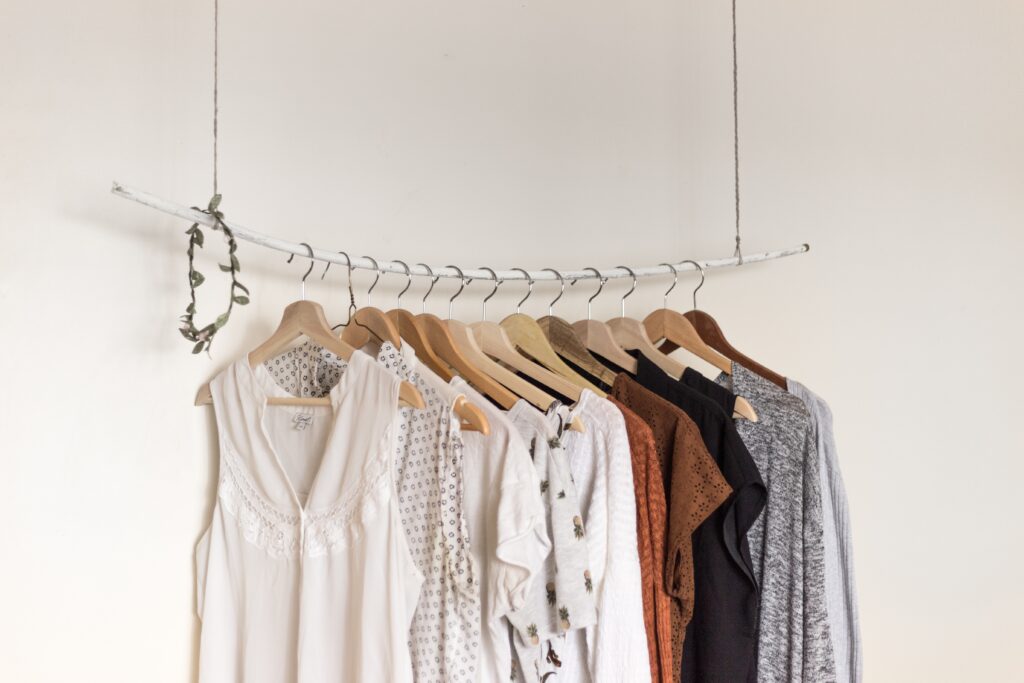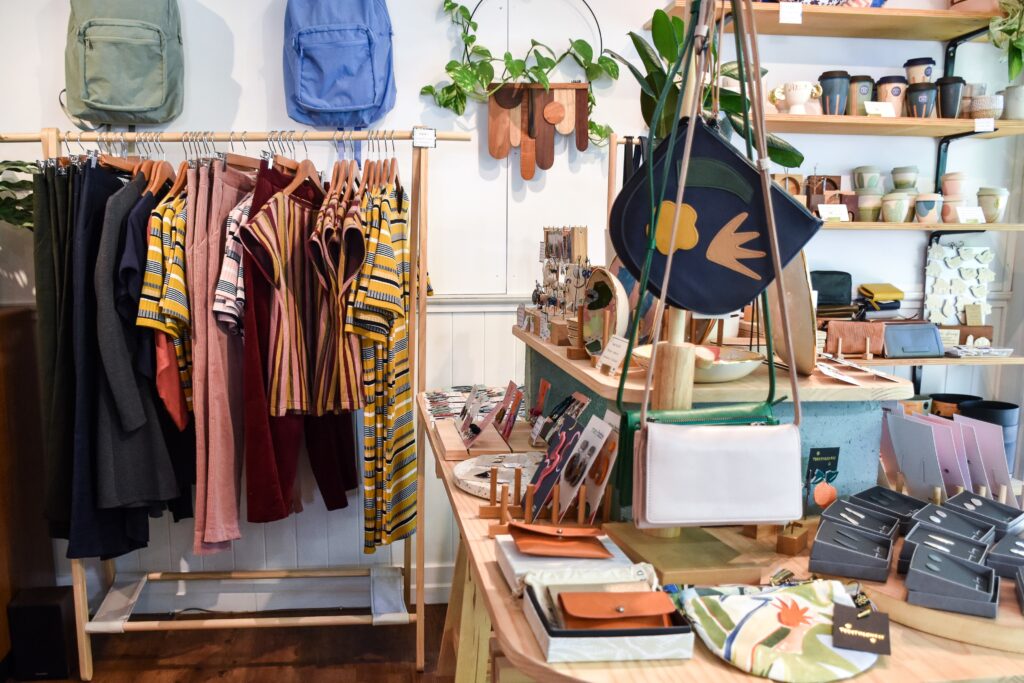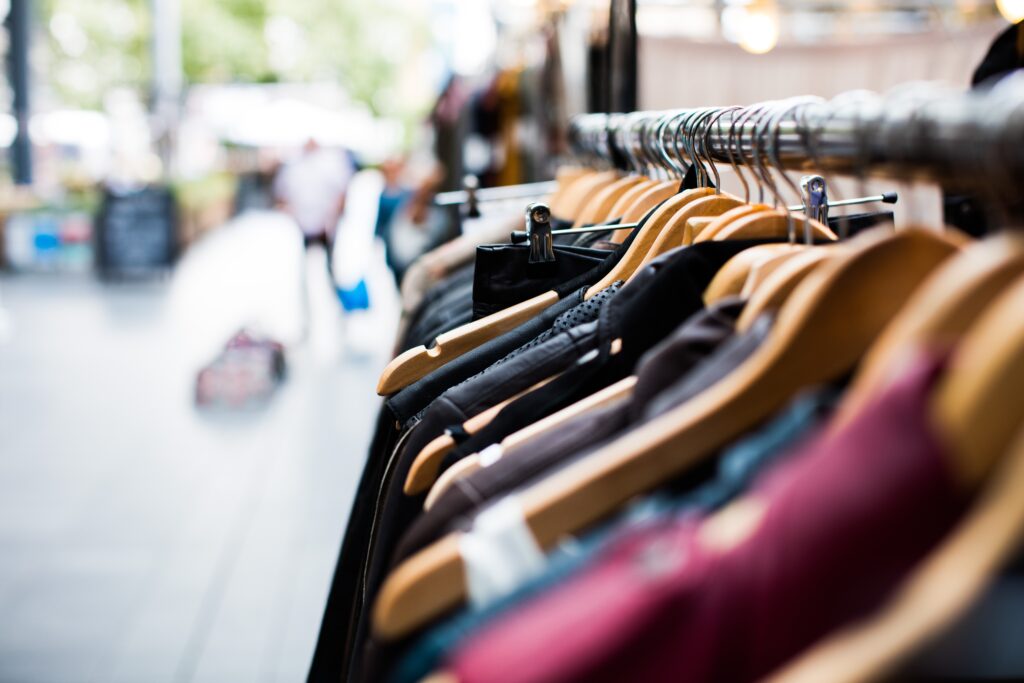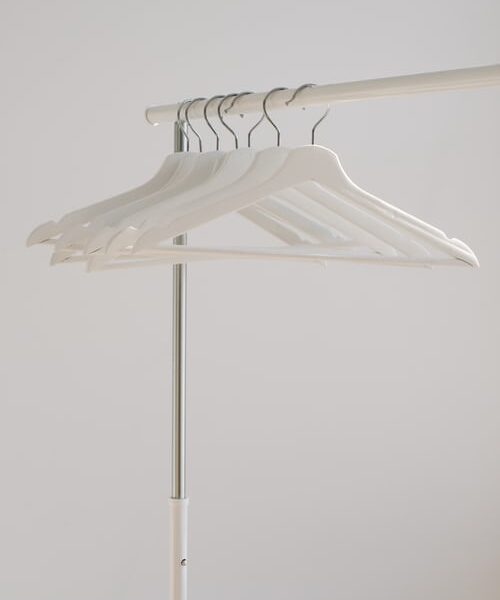If you’ve heard about the dangers of fast fashion, chances are you’ve looked into buying from sustainable and ethical clothing brands. And, like me, you’ve probably discovered that sustainable and ethical fashion is often ridiculously expensive, especially when compared to the prices at fast fashion giants. For example, a dress from Reformation often costs upwards of $200, while you can buy a dress at Forever 21 for just $20 or less.
Because of the steep price tag that comes with ethical fashion, the average consumer can only afford fast fashion, which we know has extensive human and environmental costs. The workers who produce clothes for fast fashion giants work in awful conditions for long hours, often for less than minimum wage. And we don’t wear these clothes long. The average American throws away around 80 pounds of clothing annually, resulting in 14 million tons of textiles ending up in landfills each year, and this number is only increasing. Not only that, but the fashion industry is responsible for 10 percent of the world’s carbon emissions, which is more than the emissions from all international flights combined.
Knowing this, we are stuck trying to decide whether to empty their wallet over a single dress or deal with the environmental and moral implications of buying cheap dress from a brand like Forever 21 or H&M. Buying sustainable fashion is unfortunately becoming a privilege reserved for the elite. But the option to purchase clothes that don’t weigh on your conscience should be accessible to everyone. So why is sustainable fashion so expensive? Is there another option for shopping sustainably on a budget?
Think about the production costs….

First, sustainable brands make their clothing from high-quality, natural materials such as cotton or wool that come from plants and animals. These materials must also be produced in sustainable ways and the companies pay farmers and weavers a fair price. Obtaining these natural materials produced in sustainable ways is much more expensive than the fast fashion method of producing synthetic materials from chemicals with no regard for sustainability or fair payment.
Second, sustainable and ethical brands treat their workers well rather than utilizing modern slavery to drive their prices down. Ethically run clothing factories pay their employees well and offer them union rights, breaks, limits on working hours, and safe working conditions, unlike most fast fashion companies. That’s what makes their clothing ethical, after all. So next time you balk at the price of a pair of pants from a sustainable and ethical brand, keep in mind that you’re not only paying for good quality, but also for the fair treatment of the person who made your item and to protect the planet.
Third, the demand for sustainable fashion is still relatively low. When demand goes up, there is more competition, which drives prices down. This is part of the reason why fast fashion giants are able to produce at such a low price – they are able to mass-produce, reducing cost of production. Since demand is still low, sustainable brands produce in smaller quantities which drives up price.
If you’re weighing sustainable vs. fast fashion, you should consider the cost per wear of the items you’re buying. Cost per wear is simply the price of the item divided by the number of time you wear it. While fast fashion items seem cheap, they likely won’t last long because they aren’t meant to. But a sustainable piece, while much more pricy, will likely last you years because it is higher quality and made to last. So in the end, the cost per wear will be the same, if not less.
…and the hidden ones.

Keep in mind the true cost of the item you are purchasing when comparing the prices of ethical vs. fast fashion. Sustainable and ethical brands don’t cut corners like fast fashion brands do in order to drive up profit. So when you purchase an $5 shirt from a fast fashion brand, you might only pay that $5. But behind that price tag is someone forced to work for long hours for little pay in abysmal conditions, not to mention tons of carbon emissions and toxic waste. If a company exploits people and the planet to get you that shirt at that price, is it really that cheap?
Brands need to do their part, too.

Although sustainable and ethical fashion is much more expensive to produce, brands need to participate in the conversation as well. Sustainable fashion is growing in popularity, but it should be accessible for people across all socio-economic backgrounds. Brands need to work with consumers in order to make sustainable fashion available for everyone.
Additionally, since sustainability is so hard to define, many “sustainable” or “ethical” companies don’t really understand the supply chain well enough to call themselves sustainable or ethical. There’s also the issue of some brands claiming to be sustainable or ethical in order to attract a larger customer base. Without industry-wide standards or legislation, it’s up consumers to educate themselves on which brands to purchase from, which only increases the burden on the consumer. Implementing standards in order to define sustainable and ethical is an important and necessary step towards making sustainable and ethical fashion more accessible.
More affordable ways to shop ethically and sustainably:

First, not all sustainable fashion brands are super expensive. If you do your research, you’ll find that some brands are more affordable than others. You can check out this list or this one to find some great affordable ethical fashion options. But if you still aren’t into buying from sustainable and ethical brands, here are some great ways to be sustainable and ethical on a budget:
Don’t buy so much! After all, the most sustainable wardrobe is the one you already have. Fast fashion brands (and influencers) have normalized the mentality that we should be constantly buying new clothes to replace “old” or “out-of-style” ones. But in reality, we don’t need that new dress or that new pair of shoes. So next time you’re considering a purchase, think, do I really need this? Will it make me happy? Or am I just buying it on impulse, or because it’s on sale?
Invest in quality pieces. Again, fast fashion giants encourage us to buy cheap, low-quality, trendy clothing, wear it for one season, and then throw it away. But to cut back on waste, don’t give in to purchasing “trendy” pieces. Instead, invest your money in a few high-quality basics or timeless pieces from sustainable brands, like a sturdy pair of jeans or a stylish winter coat. Although they might seem to cost you a lot now, you’ll be wearing them for years and it will probably cost you less than purchasing several fast fashion items each year.
Shop secondhand. Vintage, co-signed, and thrifted clothing has grown in popularity over the past few years. While before there was a stigma surrounding secondhand clothing, now it’s a great way to find unique pieces for a reasonable price and fight the fast fashion industry. I personally love thrifting for the satisfaction of finding those beautiful vintage pieces at a great price and knowing that I’m giving a new life to the clothes I buy. If you can’t visit local thrift stores right now, online thrifting is a great option as well.
Reduce and reuse. Host a clothing swap – it’s an easy way to shop someone else’s closet and be sustainable. If you’re anything like me, you probably have several unworn pieces of clothing in your closet that you’re going to end up throwing out. But with a clothing swap, you can exchange those pieces for ones you actually love and wear. Another great option is to rent clothing. Clothing rental subscriptions offer looks tailored to any style that you can wear once or twice and then return. This way, you can wear trendy pieces and be sustainable at the same time.
The bottom line
Even though ethical and sustainable brands are typically quite expensive, there are many ways we can shop ethically and affordably. Whatever you can do – whether that means buying from ethical brands or just shopping less in general – makes a difference. Even if you fail to shop ethically and sustainably some of the time, it’s okay! Becoming a conscious consumer is not easy and every positive decision you make matters.




